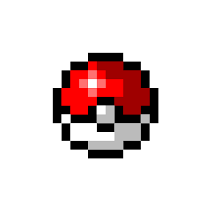"My theory on how "biomes" are created in Pokemon Go."
#PokemonGO: So, a little background on me. I am from San Antonio and I am a cyber security engineer. Using my work experience and new Pokemon Go hobby, I have compiled a huge list of nests with the assistance of a script I developed that flags and alerts me of something along the nest condition criteria. So, I've done a ton of looking at nests and watching them for hours in an attempt to understand them better.Now, Dratini are a very, very big deal here in SA as I'm sure they are everywhere since the nest rotations. So, on my down time, I've been looking into spots where I tend to see Dratini.About 3 weeks ago I discovered a crazy gold mine of a Karp nest in SA at a Gold's Gym parking lot. Finding it odd, I watched it. I saw Dratini and other semi-rare to rare pokemon spawn here in something CLOSE to a pattern. Recorded and crunched a lot of data and it's not quite consistent enough to be timed precisely.So, I thought about the biome effects. Karp nests tend to go like this : Lots of Karp, handful of Psyduck and/or Slowpoke, the occasional chance at a Dratini (let's say every 30mins or so).I then watched some of the few "biome" areas we have here in SA and Austin and how they spawn those similar type of Pokemon. They are, oddly enough, VERY strangely similar to nests but in an obviously larger range.Then, I was able to draw this possible theory.Let's say a Karp nest is 1 square mile for the sake of the argument. When creating "biome" effects, Niantic essentially copy-pasted these square nest chunks and laid them end to end along bodies of water and such to create a much larger, longer area of spawn. Thus, achieving the "biome" effect.What does this matter? Well, it means that each chunk still follows nest rules. Karp spawn, ducks/pokes, and the occasional Dratini. However, this means that these rule interactions are done multiple times based on how many chunks were laid down to create this biome. So, after theorizing and doing a LOT of hours monitoring... I can say that in these cases, it seems to be true!We have a 4 mile stretch of land in Austin along a river where you can CLEARLY see this taking place. Carp spawn in the typical 5-8 amount PER square mile. One dratini spawns somewhere near them every so often. This happens independently and repeatedly every mile chunk. Creating an almost faux Dratini nest if you have the means to travel and locate that large of a piece of land.I have a few screen capture videos that help to back up this theory I will post once I have them edited and uploaded.TL;DR Biomes are, in this case, nests copy-pasted end to end to create longer strips of spawns. Meaning Dratini has that singular chance to spawn occasionally once per copy pasted nest chunk.Edit : Seems to have created a definition war.. Not what I'm after. If you have different definitions for certain things, just interchange them with the corresponding labels in the post! I'm just trying to have informative conversation around a possible theory. I'm not trying to have a fight over what to call something. That's just silly.Edit 2 : http://ift.tt/2bwEpM0 This is photo proof of what I'm talking about. I turned off a lot of the other pokemon notifications so that they don't cause clutter. via /r/TheSilphRoad http://ift.tt/2b9VkEY
"My theory on how "biomes" are created in Pokemon Go."
!["My theory on how "biomes" are created in Pokemon Go."]() Reviewed by The Pokémonger
on
05:07
Rating:
Reviewed by The Pokémonger
on
05:07
Rating:


No comments